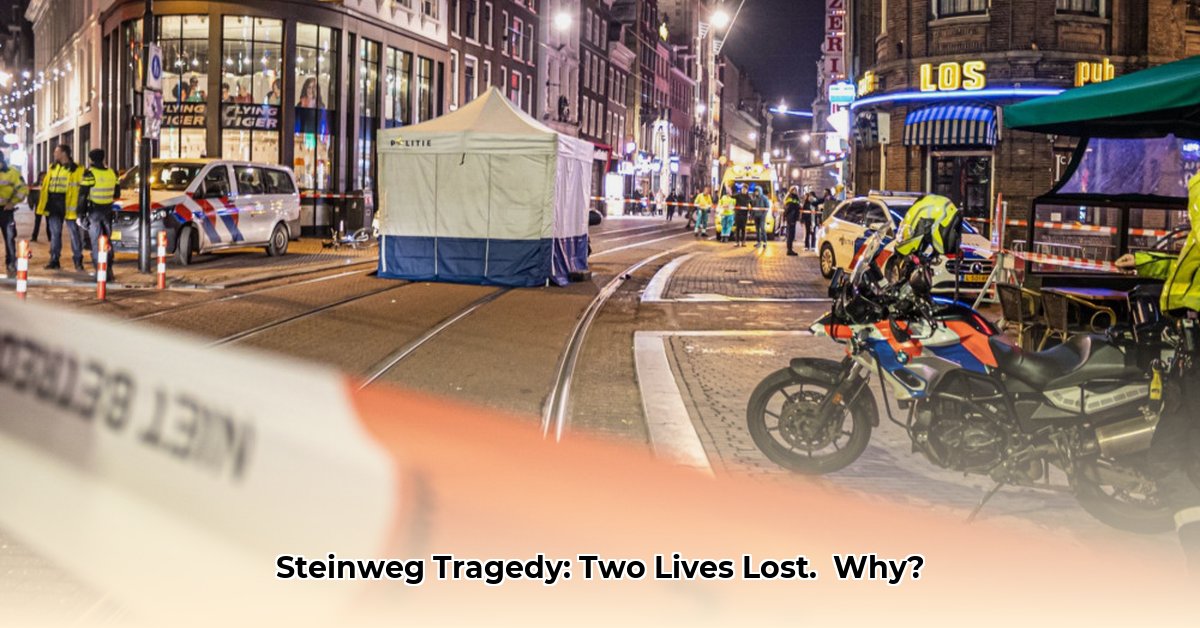
Ongeluk Steinweg: A Tragic Accident Demands Action
Two workers tragically died, and two others sustained serious injuries during a steel plate unloading operation at the C. Steinweg Handelsveem in Rotterdam's Waalhaven port. The incident, involving the Belgian barge Ronny O, has prompted immediate investigations by the Dutch Labour Inspectorate (Arbeidsinspectie) and the Rotterdam police. This accident underscores major shortcomings in port safety protocols and necessitates urgent, comprehensive change. The incident occurred on [Date - To be inserted from official sources], raising critical questions about workplace safety in the port industry. The Ronny O's steel cargo was reportedly being unloaded when the fatal accident occurred.
Understanding the Incident and the Investigation
The Arbeidsinspectie is meticulously investigating the circumstances surrounding the accident. Their inquiry will cover multiple aspects, including the condition of equipment, adherence to safety procedures, the effectiveness of worker training, and the potential role of communication failures. The investigation will aim to determine whether the accident was caused by negligence or a systemic safety failure. Parallel police investigations will focus on any potential criminal offences.
Initial reports, confirmed by both Rijnmond news and C. Steinweg, confirm the location, casualties, and the vessel involved. However, the precise sequence of events leading to the tragedy remains unclear pending the completion of the ongoing investigations. It's vital we await the official findings before making definitive conclusions. This incident serves as a stark reminder of the inherent dangers associated with handling heavy steel in confined spaces and the urgent need for improved safety practices.
How could such a tragedy occur in a modern port facility? This points to wider systemic issues in safety, training and overall risk assessment. The answer requires a thorough and transparent investigation.
Immediate and Long-Term Responses
Following the accident, authorities secured the site and launched investigations. C. Steinweg is fully cooperating, providing support to bereaved families and initiating an internal safety review. This review will help identify areas for procedural improvement within the company. However, lasting changes require a broader, industry-wide overhaul.
This internal review is only the beginning. Improvements must include upgrades to safety programmes, investment in advanced technology like robotic handling systems for hazardous tasks, and significantly enhanced worker training.
The Arbeidsinspectie's findings will be crucial. Their report will include recommendations for improved port safety and might lead to sanctions if serious regulatory breaches are detected. This incident necessitates stronger oversight and stricter enforcement of safety guidelines throughout the port industry. The goal is not just to address this specific tragedy, but to prevent future accidents.
Shared Responsibility and Crucial Next Steps
The Port of Rotterdam Authority also plays a critical role, needing to comprehensively review safety protocols, specifically those concerning steel handling. The authority must prioritize improving the overall safety culture within the port. This involves increased investment in training, improved technology for risk assessment, and integrating safety as a core value in all operations. The implementation of newer training modules and regular safety audits is vital.
The shipping company responsible for the Ronny O must cooperate fully with the investigation. Any negligence will have severe legal consequences. Beyond that, the shipping company should comprehensively review cargo handling safety procedures, potentially overhauling existing practices. This should include a review of crew training and improving communication between ship's crew and port workers. Did communication breakdowns play a role in the accident? This requires careful analysis.
How can we effectively mitigate risks associated with steel plate handling? Stronger collaborative efforts and enhanced safety systems are of paramount importance.
Key Risk Factors and Mitigation Strategies
Several factors likely contributed to the accident. The following table outlines key risks, their likelihood, severity and possible mitigation strategies.
| Risk Factor | Likelihood | Severity | Mitigation Strategies |
|---|---|---|---|
| Equipment Malfunction | Medium | Very High | Regular maintenance, redundant safety systems, thorough operator training, improved inspections |
| Unsafe Work Practices | Medium | Very High | Comprehensive training, strict protocol adherence, regular safety audits, clear instructions |
| Inadequate Safety Procedures | High | Very High | Robust procedure development, clear communication, regular reviews and updates, simplified manuals |
| Communication Breakdown | Medium | High | Improved communication channels, standardized protocols, better communication training |
| Inadequate Worker Training | High | Medium | Comprehensive, continuous training and refresher courses, practical, hands-on training |
Actionable Steps for Improved Safety
The Ongeluk Steinweg tragedy demands immediate and sustained action. The following steps are necessary to improve steel plate handling safety in Rotterdam and beyond.
Enhanced Training: Mandatory refresher courses with practical simulations are crucial for all personnel. This should become a regular occurrence.
Advanced Securing Methods: Investing in and implementing advanced securing technologies, beyond basic chains and straps, is vital. Systems should be regularly inspected.
Comprehensive Risk Assessments: Mandatory pre-voyage risk assessments are needed, considering all factors. Dynamic risk assessment allows for adjustments based on changing conditions.
Improved Incident Reporting: A transparent system is needed for meticulously documenting all incidents, large and small. This data must inform continuous improvement. A central database could prove invaluable.
Stronger Regulation: Port authorities need to review and update safety regulations. Stronger enforcement and penalties are necessary.
Industry Collaboration: Shipping companies, port authorities, and regulatory bodies must collaborate to share best practices and data. This shared learning will improve safety across the industry. This is a crucial step that cannot be underestimated given the scale of the tragedy.
The Ongeluk Steinweg demands more than just an investigation; it requires a complete overhaul of safety standards and practices, ensuring that no family has to endure the same devastating loss again.